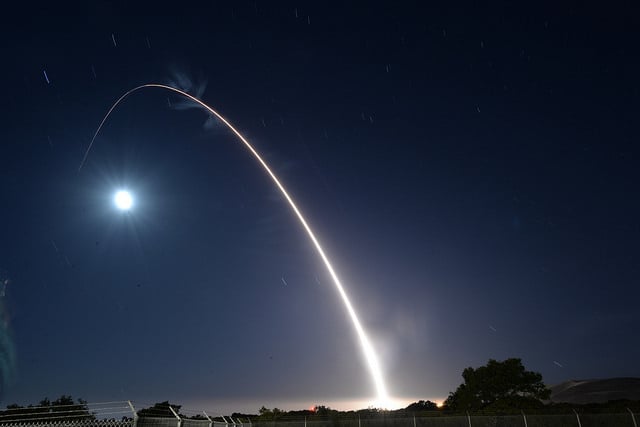
Late Friday, Boeing issued this statement about GBSD and the idea of a national team to build it:
“In our discussions to date, Northrop Grumman has expressed that they are not interested in partnering with Boeing to form a best-of-industry GBSD team. We are increasingly concerned that the Air Force’s deterrence mission and the nation’s security will be deprived of the best solution – a proven approach that leverages both companies’ technical strengths and decades of ICBM experience.”
As our sophisticated readers will know, just because Northrop doesn’t want it to happen doesn’t mean the Air Force doesn’t want it to happen, and it doesn’t mean Congress might not want it to happen. But there are significant pitfalls to a national team, argues Chris Miller, the former Air Force Deputy Chief of Staff for plans and programs. Read on! The Editor.
Some have called for the Air Force to forgo competition and direct Boeing and Northrop Grumman to form a “national team” to build the Ground Based Strategic Deterrent (GBSD) program. This may sound attractive, but it raises very real red flags. The Air Force would need to rescind its request for proposals, develop a new program plan and garner all the necessary approvals within DoD. That takes time. Inevitably, more time would lead to higher costs.
The Air Force launched GBSD in 2016. Northrop Grumman and Boeing worked under government contracts worth $329 million and $349 million for two years to develop system designs. Just after the Air Force asked both companies to develop their final proposals in July, Boeing announced in late July they would not bid unless the Air Force changed the rules of the competition.
We should be clear-eyed about what a directed “national team” really means: both Boeing and Northrop Grumman would be forced into a new government-defined partnership after each has developed relatively mature system concepts and industry teams. It implies the Air Force would need to build a much larger program office to manage each aspect of the program. Running such a national team would almost certainly require a substantially larger government workforce than a typical program requires. We have seen the services act as “integrators” in the past and it’s a pretty risky business. Without sustained, innovative, aggressive oversight by leadership at multiple levels in the Air Force and DoD, delays and increased costs could become severe.
The Air Force would be intimately involved in creating the team. It would have to develop a new program baseline, build the right government team to manage GBSD, and directly negotiate with and manage the different companies it selects. The industry team would start with Northrop Grumman and Boeing but it could include other companies if the Air Force decided to break the program into lines of effort dealing with the rockets, guidance systems, infrastructure and command and control.

A U.S. Air Force Minuteman III ICBM launches during an operational test May 3, 2017
Given that Northrop Grumman and Boeing have built program teams, plans and business structures for the program for more than two years, the Air Force would need to replow much broken ground, adjudicate system design attributes that both Boeing and Northrop Grumman bring to the table, and create a coherent program out of two team approaches that probably envision very different system designs. This, too, will take more time.
A “national team” would have greater impact on program costs than the schedule challenges it would create. The absence of competition would remove cost pressure for both major contractors, which may be attractive for them but is unlikely to bode well for taxpayers. In a typical program, competitors must balance the risks and rewards of a contract when developing a proposal. That incentive structure is diluted with a directed national team, since the Air Force would be driving from the passenger seat — forced to negotiate multiple sole source contracts with contractors who are neither incentivized to invest to win the program, nor to assume any financial risk.
The bottom line is that deviating from the current plans for GBSD carries more programmatic risk than meets the eye. If the Air Force directs Northrop Grumman and Boeing to form a single directed national team substantial program delays are likely, and the government would incur increased long-term program management overhead, cost and risk. If the two companies can build a competitive proposal together, our nation would benefit from the strengths of each company. If not, the Air Force should move forward with the GBSD program as currently structured.
Chris Miller was the Air Force Deputy Chief of Staff for plans and programs, overseeing all Air Force long-range planning and program development for operations and modernization.
Lockheed Martin projects potential $1 billion loss on classified program
Lockheed CFO Jay Malave said the company currently expects the program to become profitable on an annual basis around the 2028 timeframe.


























